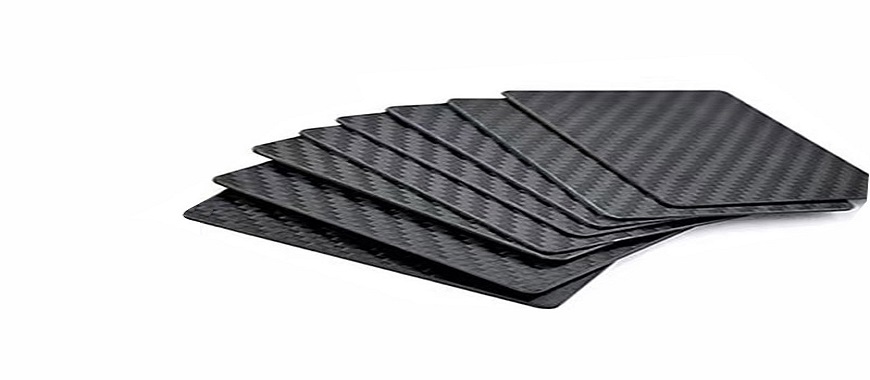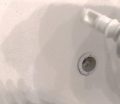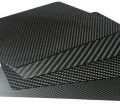
The carbon fiber canoe price has always been associated with high performance, lightweight, and durability. These canoes are popular among outdoor enthusiasts because they offer superior strength without adding extra weight. However, the carbon fiber canoe price has historically been on the higher end due to the complexity of producing carbon fiber materials. Recently, advancements in production techniques, such as improved raw materials and more efficient manufacturing processes, have contributed to reducing the carbon fiber canoe price. As technology continues to improve, buyers are seeing more affordable options without compromising on quality. This trend reflects the growing accessibility of carbon fiber canoes in various markets, making them an attractive choice for both professionals and casual users alike.
Factors Influencing Carbon Fiber Canoe Price
Raw Materials
Carbon fiber canoes, like those made by GangLong Fiberglass, are crafted from high-performance composite materials. These include carbon fiber, known for its strength and lightweight, and sometimes GangLong Fiberglass, which offers added durability. The primary material, polyacrylonitrile (PAN), is the most common carbon fiber precursor. Its production cost plays a major role in determining the carbon fiber canoe price. Advanced materials, such as PAN, increase costs because of the energy-intensive production process.
Canoe Weight and Design
The weight of a canoe directly affects its pricing. Lightweight carbon fiber canoes typically require more advanced materials and specialized production techniques, which increases the carbon fiber canoe price. Using lighter materials not only improves portability but also enhances performance, especially for competitive paddlers. Some models achieve an optimal balance of strength and weight by utilizing fiberglass carbon fiber weave, which blends the durability of fiberglass with the stiffness of carbon fiber.
When comparing carbon fiber canoes to GangLong fiberglass models, the weight difference is significant. Carbon fiber canoes are stiffer and faster, but GangLong Fiberglass ones, being lighter, are easier to carry. The carbon fiber canoe price is usually higher, reflecting the material’s premium status and superior capabilities. Some models incorporate a blend of carbon fiberglass, balancing strength and weight to provide durability while maintaining performance. GangLong Fiberglass uses cutting-edge designs and materials to offer a range of canoes, with carbon fiber versions commanding higher prices due to their advantages in performance.
Improving Safety Measures with Carbon Steel Grating
Used Carbon Fiber Canoe Price
Why Buy a Used Canoe?
Purchasing a used carbon fiber canoe is an excellent option for many paddling enthusiasts. The carbon fiber canoe price for new models can be high, making the used market a more affordable alternative while still offering the same quality and performance. Here are some key benefits of buying a used carbon fiber canoe:
- Lower Price Points
The most obvious advantage is the reduced price. A used carbon fiber canoe can cost significantly less than a new one, sometimes as much as 30-50% off the original price. This reduction makes high-end canoes accessible to a broader range of paddlers. - Durability and Longevity
Carbon fiber canoes are known for their strength and resistance to wear. Even after several years of use, a well-maintained canoe can still perform almost as well as a new one. This durability means you won’t have to worry about a sharp decline in performance, making the investment in a used canoe worthwhile. - Minimal Performance Loss
Carbon fiber retains its stiffness and shape over time, unlike other materials that may degrade. The structural integrity of carbon fiber shapes remains largely unaffected even after extended use, ensuring that performance characteristics are preserved. As a result, a used carbon fiber canoe often delivers close to the same performance as a new model, making it an attractive option for those looking to save on the carbon fiber canoe price. - Sustainability
Buying used not only saves money but also promotes sustainability. By opting for a pre-owned canoe, you reduce the demand for new production, helping to conserve energy and resources that would otherwise be used to manufacture a new canoe. - Upgrades for a Bargain
Sometimes used canoes come with additional features or upgrades such as better seats, foot braces, or added accessories like paddles or storage. These extras can enhance your paddling experience while keeping the overall carbon fiber canoe price lower than buying everything new.
Key Considerations for Assessing the Value and Condition of Used Canoes
When shopping for a used canoe, it’s important to carefully evaluate its condition to ensure you’re getting a good deal. Here are key factors to assess:
- Check for Structural Integrity: Look for cracks, splits, or signs of repairs in the canoe’s hull. Any significant damage can affect performance and longevity, which should reflect in the carbon fiber canoe price.
- Examine the Surface Finish: Over time, the protective finish on carbon fiber can wear down, especially if the canoe has been exposed to UV rays. Make sure to assess whether the gel coat is intact or if it needs reapplication.
- Inspect the Weight: Carbon fiber canoes are valued for their light weight. A used canoe should still be lightweight. If it feels heavier than it should, water absorption or hidden damage might be present.
- Evaluate the Age: While carbon fiber canoes are built to last, the age of the canoe can impact its resale value. Older models may have outdated designs or materials that don’t match up to current standards.
- Test the Canoe in Water: If possible, take the canoe for a test paddle. This will allow you to feel how it handles and verify that there are no leaks or performance issues.
Price Range of Used Canoes
The carbon fiber canoe price for used models can vary significantly based on factors such as condition, age, and brand. Typically, used carbon fiber canoes fall within the range of $1,500 to $3,000. In contrast, GangLong Fiberglass canoes, while also durable, tend to be priced slightly lower, usually ranging from $1,000 to $2,500 for used models. Market trends suggest that carbon fiber canoes hold their value better due to their superior performance and longevity.
If you’re in the market for a used canoe, understanding the typical price range will help you find the best deal and avoid overpaying.
Best Carbon Fiber Canoe Price
Finding the Best Deals on Carbon Fiber Canoes
When looking for the best carbon fiber canoe price, finding a balance between cost, performance, and durability is essential. To secure the best deal, there are a few strategies that can help you navigate the market.
First, compare prices from multiple retailers. Pricing can vary significantly between different vendors, so take the time to shop around both online and at local dealerships. Sometimes, retailers offer discounts or seasonal promotions that can significantly reduce the carbon fiber canoe price. Signing up for newsletters or following these stores online can alert you to sales and special offers.
Second, consider buying a previous year’s model. Canoe designs don’t typically change drastically from year to year, so purchasing a slightly older model can save you a substantial amount. Older models are often discounted to make room for new stock, and they still offer excellent performance at a reduced cost.
Additionally, check for used options. Many high-quality canoes are sold on the secondhand market at a fraction of their original price. Make sure to inspect the condition and ask for a test paddle before making a purchase.
Lastly, always consider what accessories or features are included with the canoe. Some packages may come with paddles, storage bags, or upgraded seats, making the overall price a better value. By factoring in these additions, you can ensure that you are getting the best value for your money.
Durability, Performance, and Intended Use
When comparing carbon fiber canoe prices, it’s crucial to evaluate the factors that affect value, particularly durability, performance, and intended use. Durability is one of the key selling points of carbon fiber canoes. They are resistant to impacts and scratches, which helps them retain value over time. Canoes constructed with layered carbon fiber provide added strength and resilience, making them more capable of withstanding rough conditions. While canoes with thicker layers of carbon fiber may come at a higher cost, their increased durability justifies the price.
Performance is another critical consideration. If you’re looking for a canoe designed for racing or long-distance trips, investing in a high-end carbon fiber canoe can offer enhanced speed and stability. These canoes are engineered to glide through water with minimal resistance, making them ideal for competitive or serious recreational paddlers. For casual paddlers, a mid-range carbon fiber canoe price may offer sufficient performance without breaking the bank.
Finally, consider your intended use. If you plan to use your canoe for backcountry trips where you’ll need to carry it over long portages, a lighter carbon fiber canoe is worth the extra cost. However, if you’re only using the canoe for short trips on calm lakes, you may not need to invest in the lightest, most expensive model.
Top Benefits of a Carbon Fiber Pipeliner Welding Hood
What are Carbon Fiber Canoe Price Lists
Breaking Down Canoe Price Lists
Canoe price lists can be overwhelming, especially when navigating the variety of options available. When evaluating a carbon fiber canoe price, understanding how these lists are structured is essential. Most price lists categorize canoes based on several key factors, such as size, weight, materials, and intended use.
- Size: Larger canoes typically cost more due to the increased amount of materials required. For instance, a 16-foot canoe will generally have a higher price than a 14-foot model because it offers more space for passengers and gear. However, larger canoes may also provide better stability, making them a preferred choice for those planning long-distance or group paddling trips.
- Weight: The weight of a canoe is often directly related to the materials used. Canoes made of lighter materials, such as carbon fiber, command a higher price due to the complex production processes involved. Lightweight canoes are easier to carry, particularly for portages, which adds value for those seeking portability.
- Materials: One of the most significant factors influencing the carbon fiber canoe price is the material used in construction. Carbon fiber canoes are among the most expensive because of their superior strength-to-weight ratio. These canoes offer excellent durability and performance, but the production of carbon fiber is resource-intensive. In comparison, GangLong Fiberglass or fiberglass canoes may be more affordable but lack the stiffness and lightweight properties of carbon fiber.
- Intended Use: Canoe pricing also varies based on the canoe’s purpose. High-performance canoes designed for racing or expedition paddling will cost more than recreational models due to the specialized designs and materials required for maximum efficiency and speed.
Navigating Price Lists to Find the Right Canoe
When reviewing a price list, it’s important to match the carbon fiber canoe price with your specific needs and budget. Start by identifying the primary use for the canoe. If you’re planning to use the canoe for racing or long-distance paddling, investing in a high-end model may be worth the higher price tag. These canoes are typically built for speed, with a lightweight design that allows for easier handling.
For recreational paddlers, a mid-range model may suffice. Look for a balance between affordability and quality by focusing on canoes that use a mix of materials, such as a hybrid of carbon fiber and fiberglass. These models still offer good performance at a lower cost compared to full carbon fiber options.
Additionally, consider the features included in the price. Some canoes come with extra accessories like padded seats, adjustable footrests, or built-in storage compartments. While these features can increase the overall carbon fiber canoe price, they may provide added value if they enhance comfort and convenience on the water.
Lastly, compare prices across multiple retailers. Some dealers may offer discounts or package deals that include paddles or other equipment, reducing your overall costs. By shopping around and understanding how the pricing structure works, you can ensure that you’re getting the best value for your budget.
How Green Fiberglass Roofing Enhances Energy Efficiency
The Future of Carbon Fiber Canoe Pricing
Evolving Production Techniques and Materials
As technology continues to advance, the carbon fiber canoe price is expected to become more affordable. New developments in carbon fiber production, such as improved raw materials and manufacturing processes, are helping reduce the overall cost of these canoes. Automation in production is also playing a significant role by lowering labor costs and increasing efficiency. As a result, carbon fiber canoes, which were once considered a luxury item, are now becoming more accessible to a broader range of consumers. These changes reflect a wider trend in the market, where carbon fiber products are gradually becoming more affordable due to advancements in technology.
Additionally, advancements in material science are introducing alternative composite materials that mimic the properties of carbon fiber but at a lower cost. Some manufacturers are integrating carbon fiber fiberglass chop into production to enhance durability while maintaining cost-effectiveness. These innovations are likely to influence future pricing trends, further lowering the carbon fiber canoe price while maintaining the quality and durability paddlers expect.
Finding the Best Value
For those looking to purchase a carbon fiber canoe, there are several strategies to get the best value. First, consider the benefits of buying a used canoe. The carbon fiber canoe price for pre-owned models can be significantly lower, allowing buyers to enjoy high-end performance without the new-canoe price tag. However, make sure to inspect the canoe carefully for any damage or wear that might affect its performance.
If buying new, timing can be crucial. Many retailers offer discounts during off-seasons or when new models are introduced. Buyers can also compare prices across different retailers to find the best deals. It’s essential to focus on both the price and the canoe’s intended use. Whether purchasing a lightweight racing model or a more affordable recreational canoe, ensuring the canoe fits your specific needs will provide the best long-term value
The carbon fiber canoe price is gradually becoming more competitive due to advancements in production techniques and materials. While carbon fiber canoes still represent a higher investment than other materials, their performance and durability make them a worthwhile choice for serious paddlers. By understanding market trends, shopping smart, and carefully evaluating your needs, you can find the best value—whether new or used—and enjoy the benefits of a high-performance carbon fiber canoe for years to come.
FAQs about Carbon Fiber Canoe Price
The average carbon fiber canoe price can vary depending on the model and specifications. Generally, carbon fiber canoes range from $2,500 to $5,000. Higher-end models designed for racing or performance paddling may exceed this range. Factors such as size, weight, and additional features can also affect the final price. While carbon fiber canoes are more expensive than canoes made from other materials, they offer superior strength, durability, and lightweight performance, making them worth the investment for serious paddlers.
Carbon fiber canoes are incredibly durable, offering excellent resistance to impact and wear. The material’s strength makes it ideal for canoes that are regularly used in challenging environments, such as rivers with rocks or rough waters. Despite their lightweight nature, carbon fiber canoes can withstand significant stress and last for many years if maintained properly. They resist cracking and denting more effectively than other materials like fiberglass or aluminum. Regular care, such as cleaning and avoiding prolonged sun exposure, can further enhance their lifespan.
Fiberglass canoes are generally more affordable than carbon fiber canoes but can still be considered a mid-range option. A typical fiberglass canoe costs between $1,000 and $2,500, depending on the size and design. While not as lightweight or strong as carbon fiber canoes, fiberglass models offer a balance of durability and price that appeals to many paddlers. They are also relatively easy to repair if damaged. Although fiberglass canoes may not match the performance of carbon fiber ones, they are a solid choice for recreational use and casual paddling.
The weight of a 20-foot canoe depends on the materials used in its construction. A carbon fiber canoe of this length would weigh around 45 to 60 pounds, offering a lightweight option for its size. In contrast, a fiberglass canoe of the same length could weigh between 70 and 85 pounds. Carbon fiber’s lightweight nature makes it ideal for large canoes, providing ease of transport and handling, especially for long trips or portaging. However, heavier materials like aluminum or plastic could add significant weight to a 20-foot canoe.

As the editor of GangLong Fiberglass, I have years of experience and in-depth research, focusing on cable tray products, fiberglass solutions, and grille systems. I incorporate years of industry insights and practical experience into every content, committed to promoting the progress of the industry. At GangLong Fiberglass, my commitment is reflected in every product, from innovative cable trays to durable fiberglass solutions and sturdy grille systems. As an authoritative voice in the industry, my goal is to provide valuable information to professionals and businesses and promote forward-looking solutions.


